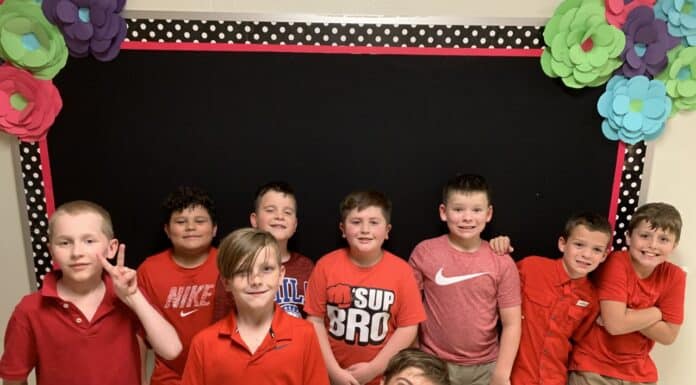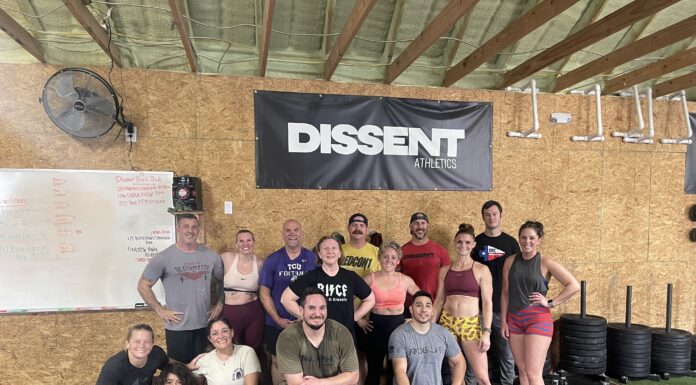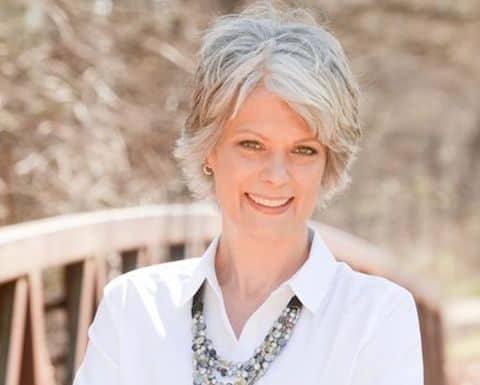
BASRA, IRAQ
09.21.2020
Courtesy Story
Texas Military Department
Courtesy Story: Ms. Anne Constantin Burge
Kennedale News Note: Article is a reprint of article recently posted by the Texas Military Department and contains information about Chief Warrant Officer 2 CORRY A. EDWARDS and explains why Kennedale has a roadway named after Edwards.
“Pull up!! Pull up!!” cried a pilot in Chalk 4.
“Chalk 3 is down, Chalk 3 is down,” screamed Sgt. John Vasquez from Chalk 2’s ramp
Those were the last words the seven-man Red River 44 crew, designated as Chalk 3, heard before their Boeing H-47D Chinook helicopter, carrying 4,000 gallons of fuel, hit the Earth at about 116 miles per hour and was engulfed in a fireball.
According to reports, sometime before midnight, on 17 September 2008, the tragic loss of seven US Army National Guardsmen, four from Texas and three from Oklahoma, was the worst one-day loss of men for the Texas National Guard since WWII. The Chinook, Red River 44 crew flew that night, was a Boeing CH-47D (Serial Number 91-00267 – modified from a Boeing H-47A (SN 61-2417•). She was assigned to Company G, 2nd Battalion, 149th Aviation Regiment, 36th Infantry Division, known as the Hookmasters, in Grand Prairie, TX. For the mission, the 45-year old helicopter was designated Chalk 3, in a formation of four other Chinooks, when it crashed 60-miles west of Basra, on a mission from Udari, Kuwait to Balad Air Base, north of Baghdad, Iraq, in support of Operation Iraqi Freedom. The seven men had been on active duty since 5 June 2008 and completed 2½ months of training at Ft. Sill, OK. They deployed to Kuwait on 24 August 2008.
But, in their everyday lives were sons, brothers, fathers, friends, co-workers and neighbors who were assigned to the Texas Army National Guard in Grand Prairie and the Oklahoma Army National Guard in Lexington and were assigned to B (or Bravo) Company, 2nd Battalion, 149th Aviation Regiment, 36th Infantry Division, Task Force 34, in Udari, Kuwait.
Bravo Company’s plans for missions before 17 September 2008 were often terminated, due to weather and maintenance issues. But, on 17 September 2008, at 11:01 the four-ship formation left Udari, Kuwait.
“16 minutes later, it crossed into Iraq. Chalk 1 and Chalk 3 tested their flares at 11:30 and the door gunners fired their weapons, as was standard procedure. Things began to go wrong 40 minutes or so, into the mission.” Flying at 138 mph, at around 500’, Chalk 2 began making a gradual left turn. Its unidentified pilot in command, told investigators his heads-up display indicated he was in a left bank. “He leveled wings in the altitude indicator and a felt weird sensation and sense of confusion. As he tried to level the ship’s wings and turn right to follow lead aircraft, he became completely overwhelmed with spatial disorientation.” He then gave control of the ship to his 1st Lt. but regained control a few seconds later, when he “realized from the tone of his co-pilot’s voice and his apprehension, that he was probably disoriented as well.”
Chalk 4 was flying at the rear of the formation and turned to avoid Red River 44 (Chalk 3) when it slowed, turned left, leveled out and then “entered a descending left turn at 600’ and 116 mph. It then made a slight right turn and 30°pitch-down angle.” Then, Chalk 4’s pilot saw that Chalk 3 fired its flares, pitched up, hit the ground and exploded.
A Texas Army National Guard commander said ‘spatial disorientation’ was probably the main cause for the Chinook’s crash. “Clouds, fog, haze or darkness can cause a pilot to misperceive his or her orientation and fly into the ground, while thinking he or she is in level flight. The parts of Kuwait and southwestern Iraq the Texas Guard crews flew over that night are known by pilots for weather that can cause it. Visibility had been poor even before the mission began in Kuwait. Visibility was 2.7 miles with blowing dust only minutes before the formation launched at 11 pm.” Major Carlos Tamez, Charlie Company’s Commander, a then 41-year-old Weslaco financial adviser said, “Where those guys were, it’s tough, man. …it was just so black, no contrast, flying at night.”
The crewmen’s remains were immediately retrieved from the crash site and taken to the United States for interment at various locations. At a second funeral for the remains, which couldn’t be separated, The Patriot Guard, an international group of motorcyclists dedicated to honoring our nation’s Veterans at their burials, had a route prepared for the entourage carrying the families and friends of the seven members of Red River 44. Each Patriot Guard stood in a line and held an American flag, as the vehicles drove past. One Patriot Guard member said, “We have a very special bond with the 2-149th, as we sent them off to war. We buried their Heroes and we escorted them home as they returned to their families and loved ones.”
THE TEXAS ARMY NATIONAL GUARD MEMBERS OF RED RIVER 44 …
Chief Warrant Officer 2 CORRY ARDELL EDWARDS, 38, was born 23 September 1969 in Midwest City, OK and is buried at the Dallas-Fort Worth (TX) National Cemetery.
After graduating from high school in 1988, Corry joined the military in December 1992 and earned his paramedic certification in 1994. Since 1997, he was employed at the Dallas Army Aviation Support Facility. From June 2003 to April 2004, he served in Bosnia-Herzegovina. On an on-line bulletin board, Maj. Allen Richards said h will “will miss Chief Warrant Officer Corry A. Edwards’ humor and laughter. As a leader in the Army, you are every officer’s wish come true and I could not think of anyone better as my Crew Chief. I will miss your friendship.”
“Corry valued integrity and lead his life in such a way so as to impress on his sons to be honorable men. His loving charm captured the hearts of everyone,” his family wrote in tribute. Corry’s hometown of Kennedale, TX was constructing a new road to connect other roads and in Corry’s honor, the Kennedale City Council renamed as Corry A. Edwards Drive.
Chief Warrant Officer 2 Edwards, was posthumously awarded the Bronze Star and promoted to Chief Warrant Officer 2 and is survived by his wife and his two sons.
Staff Sergeant ANTHONY ‘LUKE’ MASON, 37, was born 19 October 1970 in Panama and is buried in the Springtown (TX) Cemetery.
When Luke was about 1-year old, he came to the US and was reared in the Springtown and Azle areas. Luke’s Grandparents adopted his younger brother, sister and him when he was about 9. “When Luke worked at a bowling alley, his car got stolen at least three times. Each time, he’d find it, take it back and get it running again. When he traded it in, the dealer asked for the keys. Mason handed him a screwdriver.”
Luke’s interest in mechanics led him to work for his father-in-law, who served in the Air Force. Luke then decided he could put his mechanic’s skills to use by working on helicopters for the National Guard, which he joined in 1996 and was a full-time civilian contractor for the unit. A few years before the crash, he became part of the flight crew. Luke, who joined the TXANG in 2007, first served in Iraq from February 2003 to September 2003. He attended Basic Training and Advanced Individual Training to become a Helicopter Engineer. The 2008 deployment was Luke’s second to Iraq.
“He enjoyed fishing, bowling and hunting deer on a lease near Graham. But, he most loved spending time with his four daughters in their sports and cheerleading.” His military awards include: the Army Commendation Medal, Armed Forces Reserve Medal, Army Achievement Medal, and Aircraft Crewman Badge.
Staff Sergeant Mason was posthumously awarded the Bronze Star and promoted to Staff Sergeant. Luke is survived by his wife and his four daughters.
Sergeant Major JULIO CESAR ORDÓÑEZ, 54, was born 2 July 1954 in Honduras and is buried at Fort Sam Houston (TX) National Cemetery.
Julio grew up in Honduras and attended St. Philip’s College and Hallmark Institute in San Antonio. He joined the military on 29 April 1982. Before joining the Texas Army National Guard, he served in Arkansas as a Helicopter Engineer with HHC, 6th 112th. While working at the San Antonio Army Aviation Support Facility, Julio mentored younger soldiers and was said to be ‘quiet, respectful and down-to-earth. It was reported, that although Julio stood 5’ 6” tall, he kept a low profile, but, was easily spotted at the Texas Guard’s air facility at Martindale Army Airfield.’ People looked up to him. He was almost like a big brother,” said Staff Sgt. Richard Ramirez. “If you needed some advice, he was there for you. He would never steer you in the wrong direction.” “He was a very good guy, always friendly, very mellow, very personable,” said TXANG Sgt. Jennifer Krausch.
As a former Crew Chief, he led the battalion’s enlisted men. In 2007, he was nearing retirement and already completed a previous deployment to Iraq. His awards include: Army Achievement Medal, National Defense Service Medal, and Non-Commissioned Officer Professional Development ribbon.
Sergeant Major Ordóñez, who was posthumously promoted to Sergeant Major, was survived by his wife of 33-years, two sons, two daughters, two grandchildren, his parents and four siblings.
Captain ROBERT VALLEJO II, 28, was born 12 March 1980 in Beeville, TX and is buried at the Dallas-Fort Worth (TX) National Cemetery
In 1998, Robert graduated from Brewer High School. In May 2005, he graduated from Texas Christian University with a Bachelor’s of Science degree in Speech and Communication. While at TCU, he was involved with Army ROTC. Robert was “very disciplined and would go jogging at 5 am every morning, no matter the weather. But, he melted when it came to family, visiting whenever he could. ‘He was a happy person. I never saw him in a bad mood. He enjoyed jumping out of airplanes and parachutes,’ said his Aunt Sara Ramirez.”
From when Robert was just a teen, he knew he wanted to be a pilot. He was accepted into Flight School at Fort Rucker, AL where he learned to fly helicopters. He joined the National Guard in April 1999. The deployment to Iraq was his first overseas assignment.
Outside of the National Guard, Robert was a Customer Relations Manager for Pulte Homes. In 2005, Robert participated in a marathon-length event in New Mexico, called the Bataan Memorial Death March. It commemorates the forced march of American and Filipino Prisoners of War by the Japanese, through the jungles of the Philippines, during WWII.
On 3 October 2008, the Hon. Kay Granger of Texas, US House of Representatives, read remarks in honor of Capt Vallejo, into the Congressional Record. He is survived by his wife, his parents, three sisters, and his two grandmothers.
After he arrived in Iraq, his wife, whom he met in junior high school, told him that a sonogram showed the baby they were expecting would be a girl. After he was killed, another sonogram revealed the baby was a boy, whom she said she’d name Robert.
Captain Vallejo was posthumously awarded the rank of Captain and the Bronze Star.





































